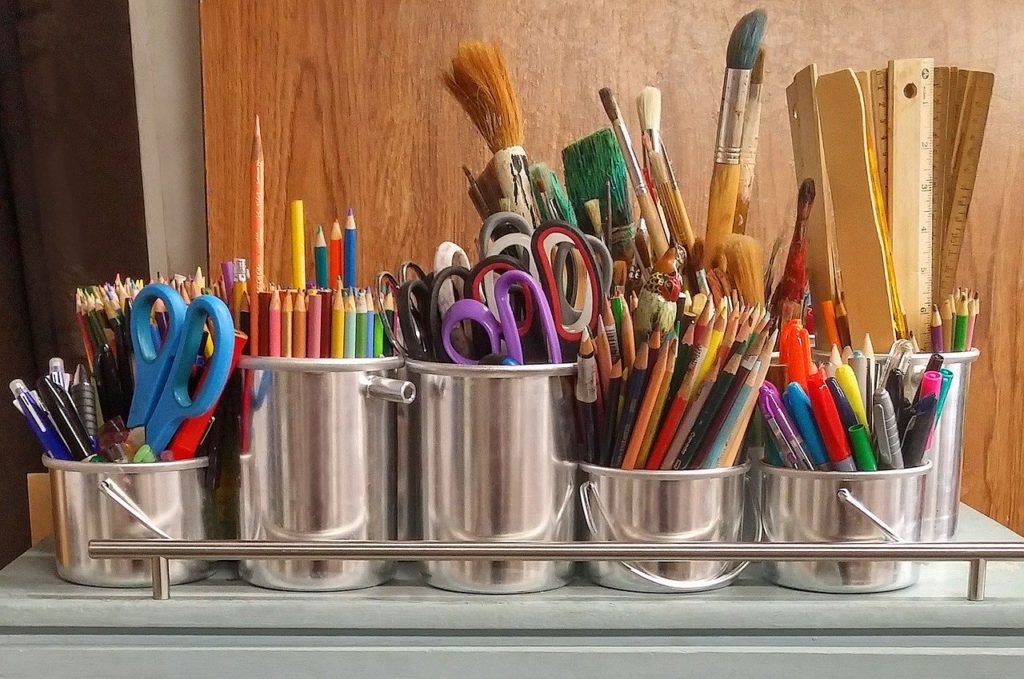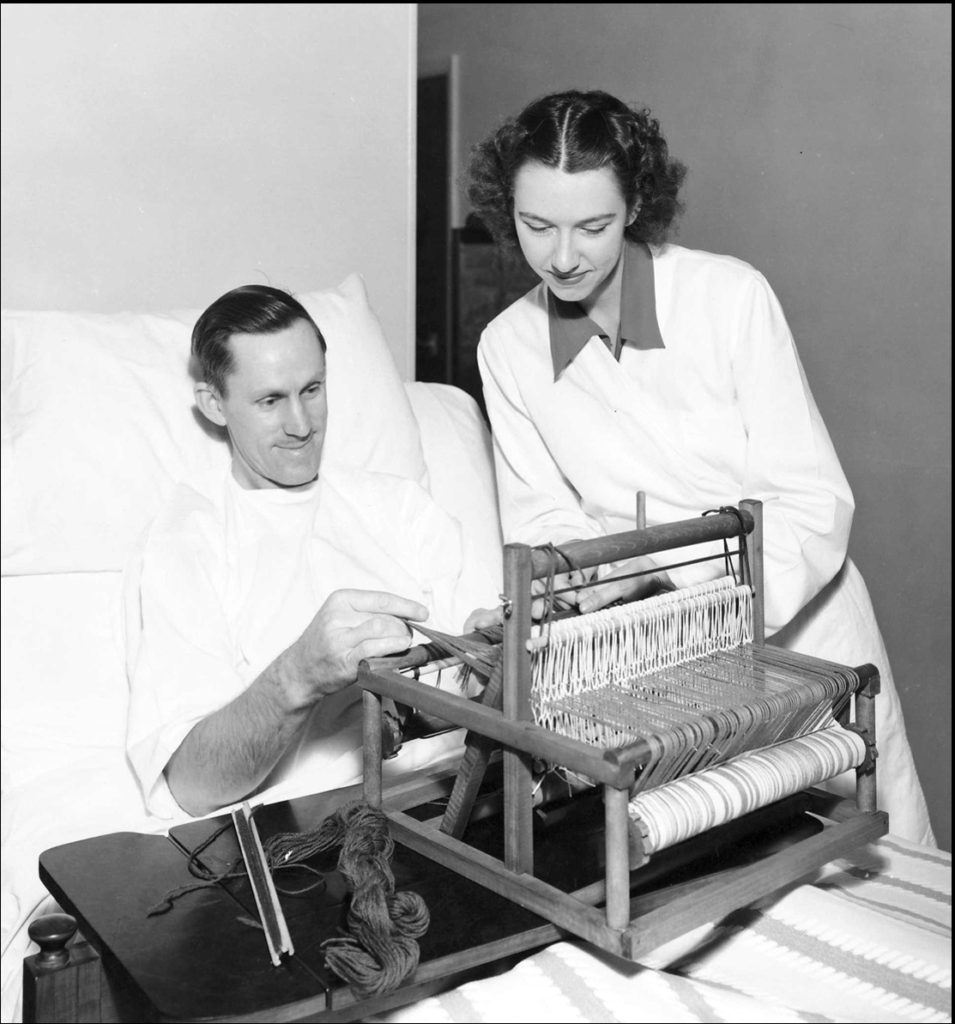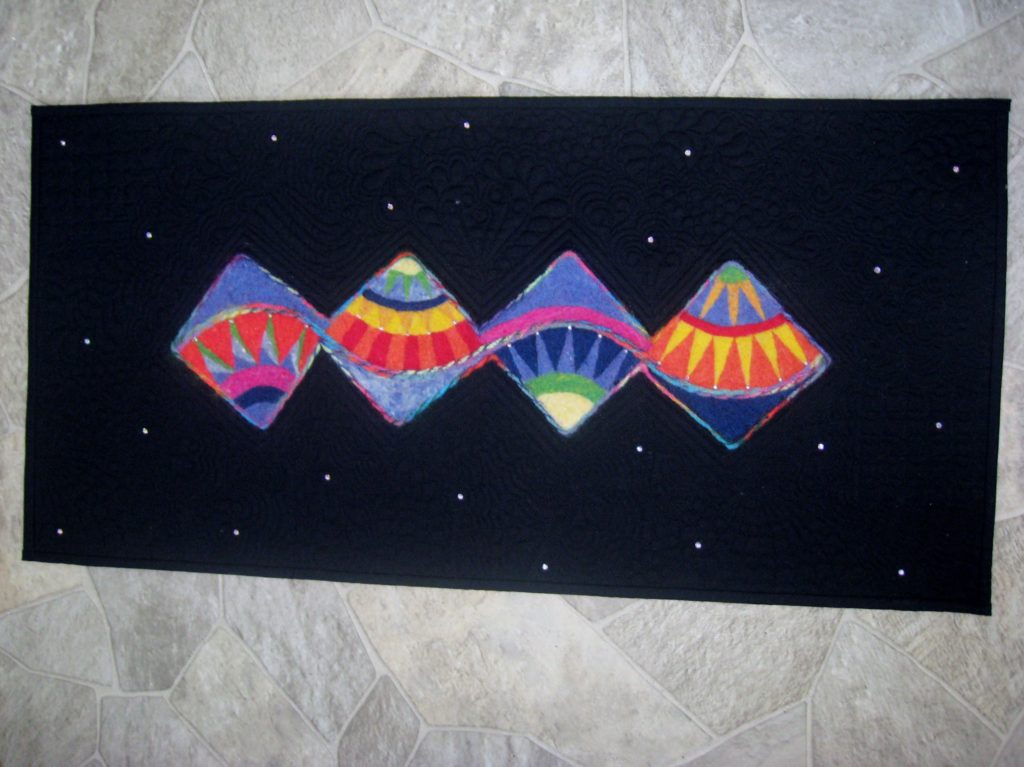
Hello Fiber Friends! We have all heard creating by hand increases happiness. Whether you knit, sew, bake or garden making things by hand is a necessary part of a healthy life. But where did this notion start? In this post we are going to dive deeper into this subject.
Creativity
Before I get too far lets define what exactly does it mean to be creative. According to Creativity at Work.com, Creativity is the act of turning new and imaginative ideas into reality.
“Creativity is the process of bringing something new into being. Creativity requires passion and commitment. It brings to our awareness what was previously hidden and points to new life. The experience is one of heightened consciousness: ecstasy.” – Rollo May, The Courage to Create
If this is all true, then how did we get so far away from creating by hand?
Industrialization
In the late 19th century, Britain was already heavily industrialized and “alienated”. A movement of artists, “makers” and philosophers emerged to criticize industrialization. Two men, John Ruskin and William Morris, began to see the devastation working in factories were having on health and wellness of it’s workers. The two men were behind a new movement to make people aware of the dangers of not crafting by hand anymore. Britain’s Arts and Crafts movement emerged as an artistic and a political movement, which flourished in Europe and North America between 1880 and 1910. It stood for traditional craftsmanship using simple forms, and often used medieval, romantic, or folk styles of decoration.
William Morris

William Morris was convinced that creating by hand increases happiness and craftsmanship was the only way to restore the workers’ lost dignity and wholeness. By making things both beautiful and useful, workers could express their unique personalities. They could find meaning in what they did. The mark they left provided ample satisfaction and inspiration. In other words art and craftsmanship were the only way out of alienation. Morris’s work continued to be influential. By the turn of the 20th century, the arts-and-crafts movement’s advocates reached across to America.
Influence on the making of a new Profession
Like their British contemporaries, advocates in America displayed a contempt for the system of mass production, which was keyed to lower class tastes. People advocated for the use of natural materials and processes. They wanted to purchase and use hand-made items that were straightforward and simple in design. Indeed, for some advocates, the arts-and-crafts movement meant quality of design as much as quality of life.”

Physicians in America took notice of this movement and argued the whole mind body connection in healing was being overlooked. People suffering from Neurasthenia were not being treated properly and this malady was being linked to the strain of American life. Dr. Herbert Hall started a work cure method for treatment of these type of patients. This would take the place of the traditional bed rest treatment. He would draw his principles directly from the Arts & Crafts movement philosophies. Two other physicians, Adolph Meyer and William Rush Dunton also joined Hall in his discussion of humanizing treatment of the chronically ill. Others in this time period also came on board and became standard names in my Occupational Therapy history courses.
Arts & Crafts Movement and Occupational Therapy

At the beginning of the 1900’s, William Rush Dunton, Eleanor Clark Slagle and others saw a great need to incorporate occupation into healing practice. Thus in March 1917 Occupational Therapy as a profession was formed.
For over a century, arts and craft-based activity have been a core part of occupational therapy that emerged as a distinct health field around the end of the first world war in response to the needs of returned soldiers. This includes many suffering from what we now refer to as post-traumatic stress disorder, but then referred to as “shell shock”.
This was as both diversional therapy (taking your mind off pain and negative thoughts), as well as skills-development geared towards re-entering the civilian workforce.
Occupational Therapy continues to use arts, crafts, baking, gardening and any other meaningful activity to the client in therapeutic sessions. It is a vital component of the profession that the client is engaged in using their hands in a productive manner. Every activity they do in therapy should be unique and special to them.
What makes handmade special?
Unique, original and loved – and that’s the crafters. The things they make are even more special. A handmade gift is a unique and bespoke item that is special to the recipient and will often be a lifelong keepsake.
Dr. Kelly Lambert explored the relationship between hand use, current cultural habits, and mood. She found that creating by hand improves happiness. Hands-on work satisfies our primal need to make things and could also be a remedy for societies depression. Process is important for happiness because when we make, repair or create things we feel vital and effective. When we are dissolved in a deeply absorbing task we lose self-consciousness and pass the time in a contented state. Functioning hands also foster a flow in the mind that leads to spontaneous joyful, creative thought.

When you make something you feel productive, but the engagement and exploration involved in the doing can move your mind and elevate your mood. creative action can function as a natural antidepressant.
Boosting your level of Creativity
Studies by George Land reveal we are naturally creative and as we grow up we learn to be uncreative. He concludes that “What we have concluded,” wrote Land, “is that non-creative behavior is learned.” When we find ourselves in that place of being stagnate and stuck on our creative journey, there are things we can do to get our “mojo” back. Here is just a short list of activities you can do to improve your level of creativity and keep creating by hand for increased happiness: 5 Tips on Boosting your level of Creativity!
Share your experiences and let us know what worked at Anita’s Fiber Art Group on Facebook!

